The Mobile Sausage Factory (prototype) visited Hyllie at the Finissage together with sound artist Dr. Flora Könemann (Berlin) who invited visitors and participants to listen to the sounds of sausage making.
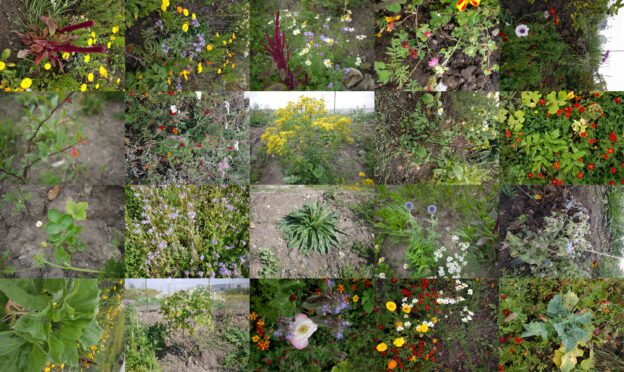
(English) A grid of flowers
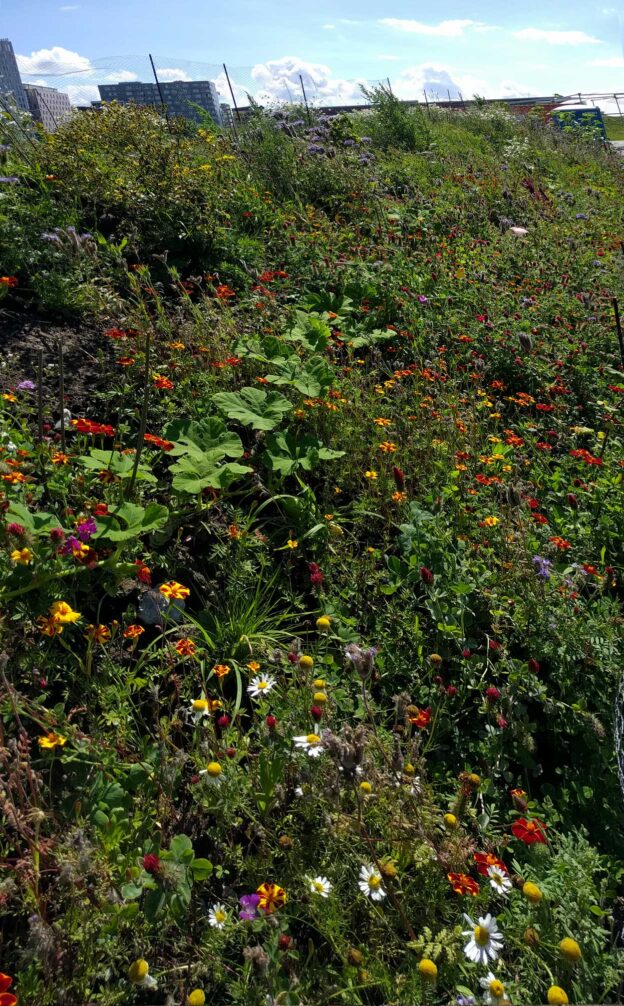
(English) Hedgerow Hyllie grows in
(English) The sensor node
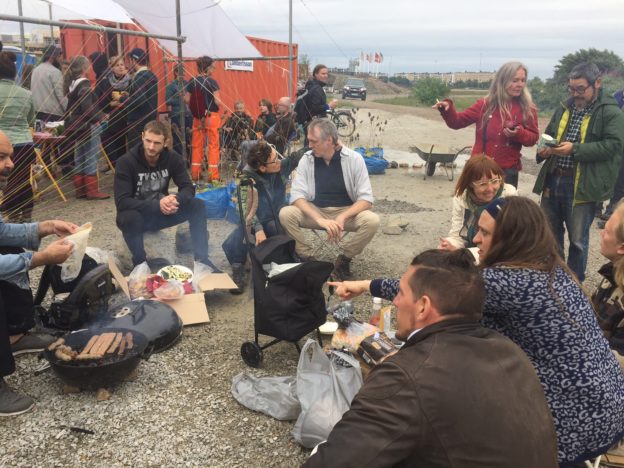
Sista helgen! Program för finissage söndagen den 27 augusti
Vi bjuder in dig till Agrikulturas sista dag för att utforska konstverk och projekt på fältet, delta i workshops och se föreställningar.
På söndag får du gärna ta med dig picknick, picknickförnödenheter, glas (och om du har, en picknickfilt eller duk) och delta i vår festliga picknick klockan 17:00.
Öppettider: 11:00-18:00
Ta en promenad i skogen runt Rory Solomons projekt Radio Tree Malmö; skörda grönsaker från Ursula Endlichers trädgårdsland Input Field; kolla in Juanli Carrións helande trädgård OSS Holma; besök Monix Sjölin i hennes Spirit House; begrunda klimatförändringen vid Oliver Kelhammers Neo-eocene och Rory Solomon & Wes Heiss Transplant…
Program över aktiviteter:
12:00 – 14:00: Wasteland Encyclopaedia, Agata Bielska
Delta i en workshop med Agata Bielska och samla mat på Agrikulturas fält till avslutningspicknicken.
13:00 – 15:00: Edible Carpet, Åsa Maria Bengtsson
Tant Grön skördar och delar ut sallad och annat grönt ätbart från den Ätbara Mattan.
13:00 – 15:00: The Sausage Factory, Helena Marika Ekenger
Delta i Helenas workshop i det Öppna Rummet vid hennes poetiska skulptur som producerar mat till avslutningspicknicken!
15:00 – 16:00: FieldWalk III, Gunnel Pettersson
Gunnel får sällskap av Sons of God (Leif Elggren & Kent Tankred) och Amit Sen i en fältvandring som kombinerar musik, performance och visuell konst på ett sätt som gör traditionella gränser ointressanta.
17:00 Picknick på fältet i det Öppna Rummet
Delta i vår gemensamma picknick på fältet! Var vänlig ta med picknickgrejer och mat att dela med dig av!
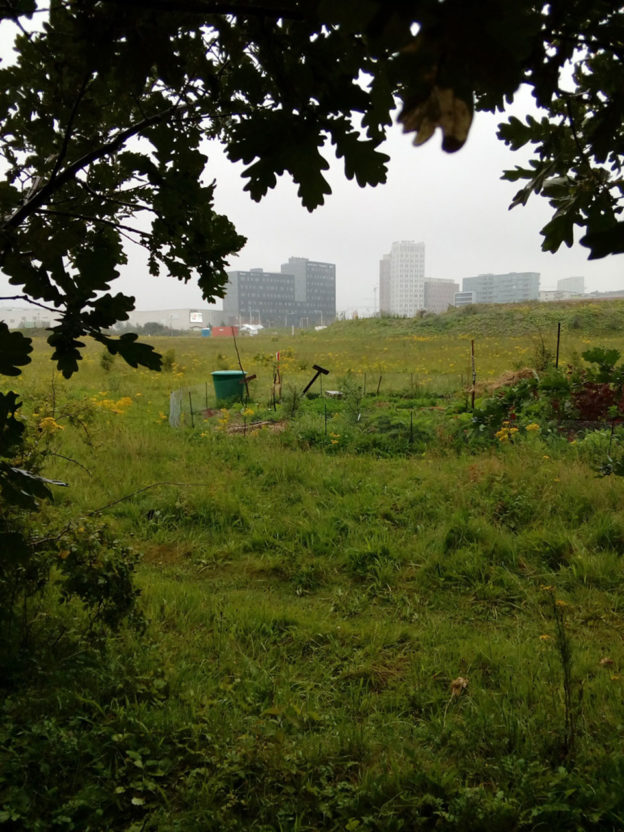
Sista helgen! Program för lördagen den 26 augusti
Delta i Agrikulturas sista helg på platsen för den framtida Engelska Parken i Hyllie! På lördag kommer det att vara guidade turer klockan 13:00 och 15:00 och dessutom kommer flera konstnärer hålla sina sista föreställningar runt sina projekt.
Öppettider: 11:00-18:00
Ta en promenad i skogen runt Rory Solomons projekt Radio Tree Malmö; skörda grönsaker från Ursula Endlichers trädgårdsland Input Field; kolla in Juanli Carrións helande trädgård OSS Holma; besök Monix Sjölin i hennes Spirit House; begrunda klimatförändringen vid Oliver Kelhammers Neo-eocene och Rory Solomon & Wes Heiss Transplant…
Program över aktiviteter:
14:00 – 16:00 The Importance of Being … , Malin Lobell
Häng med Malin Lobell i en konversation om daggmask, en guidning runt de ätbara växterna i Cluster, och en konversation om att upprätthålla Cluster som en ätbar skogskant i framtiden!
16:00 – 17:00 Pigs and Man, Bent Bøgedal Christoffersen
Se på Bent och hans grismedarbetare i deras sista ljudperformance.
17:00 – 17:30 Landscapes of Resistance, Egle Oddo
Som en del i sin Ark of Seeds-installation erbjuder Egle Oddo på ätbara miniatyrskulpturer fyllda med frön och örter. De är designade i samarbete med kökschefen Lorenzo Eleuteri.
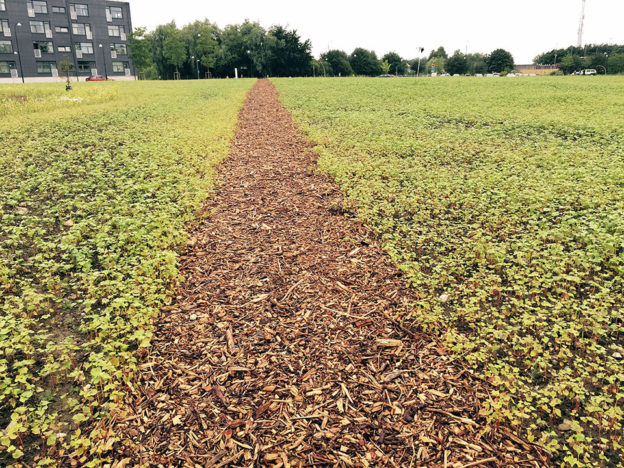
Fältvandring II
23 augusti
kl 17-18
Samtalen handlar om avståndet mellan landsbygden och det urbana och alternativa möjligheter till större samröre. Behövs även guerrilla gardening på landsbygden? Kan vi se på det offentliga rummet på ett nytt sätt?
Transplant at sunset
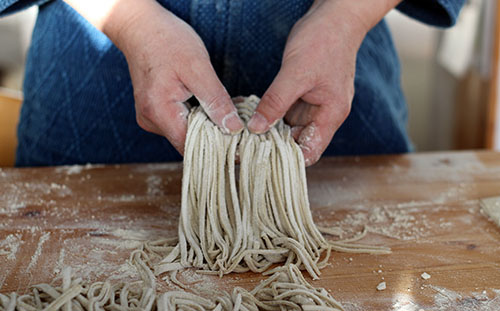
Field Walk I
Lördag 20 augusti
16:00 – 17:00
Join Gunnel Pettersson for the first of her FieldWalks at the Buckwheat Field at Agrikultura!
Fältvandringen handlar om tillverkning av bovetenudlar hämtat från den japanske kulturen kring ”Soba” (bovete/bovetenudlar). Den gästas av Takao Momiyama som bjuder på smakprover och receptutbyte.
Takao Momiyama är konstnär och konsthantverk med ett stort intresse också för mathantverk. Han tog tredje pris nationellt i Gastronomiska Matverk 2015 tillsammans med kocken Johan Linneborg och Gunnel Pettersson för handgjorda bovetenudlar.
And we others are simply food that has been released for a while.
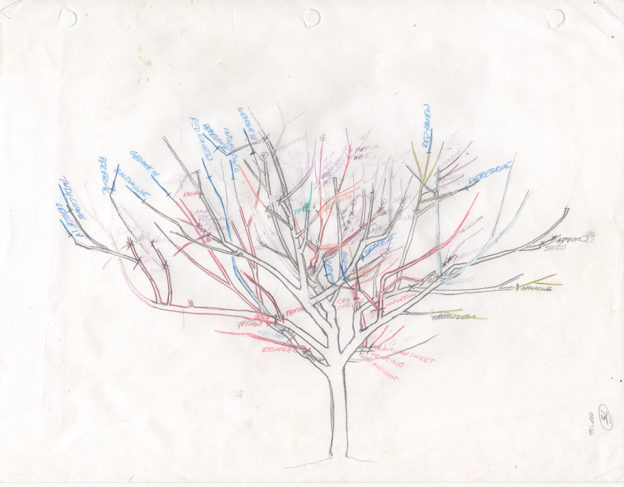
Tree Diagrams
Spirit of the Beehive : documentation
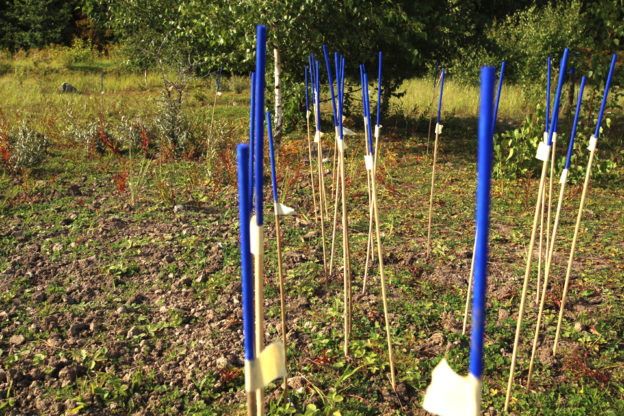
More thoughts
More thoughts on Vague Meadow in the blog: www.700dandelions.bjornwangen.se/uncategorized/more-thoughts-on-vague-meadow/
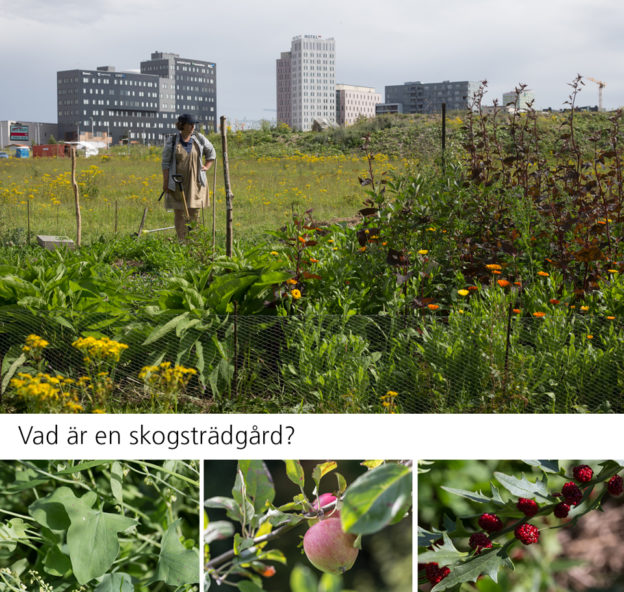
Cluster Open House
Saturday 12 August
12:00 – 14:00
Cluster bjuder in till visning, provsmakning av ätbara perenner och samtal om en medborgarträdgård på allmän parkmark.
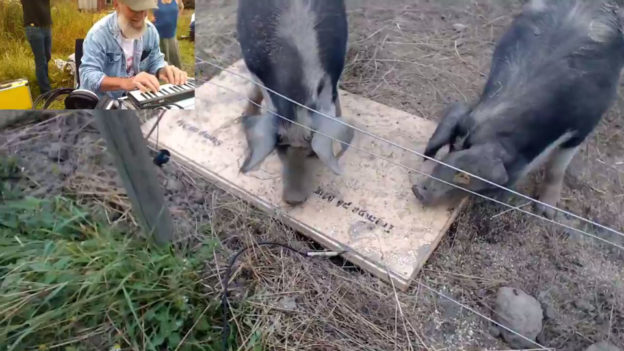
Pigs and Man..
Some images
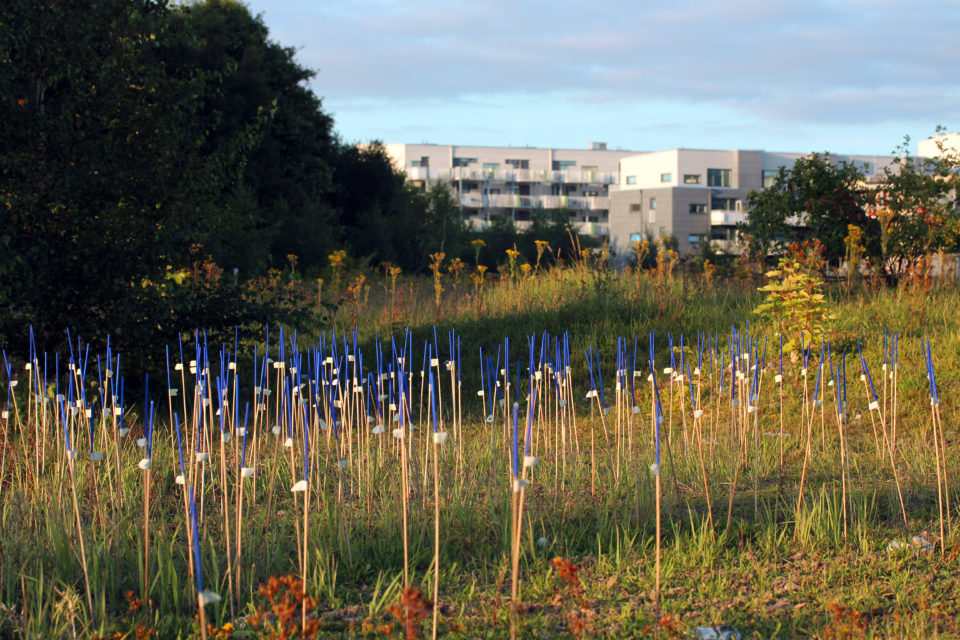
The last two weeks I’ve added 90 plants.
www.700dandelions.bjornwangen.se/
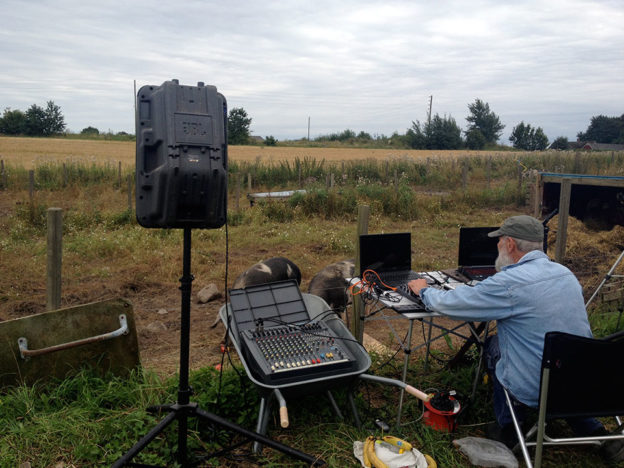
Pigs and Man on Live Stream
Friday 11 August
16:00 – 17:00
Join Bent Bøgedal Christoffersen for Pigs and Man sound performance! This time, instead of being at Agrikultura in Hyllie, Bent will perform with his pigs at their home on the farm! Listen on Live Stream, if the pigs are willing!!
human-manure
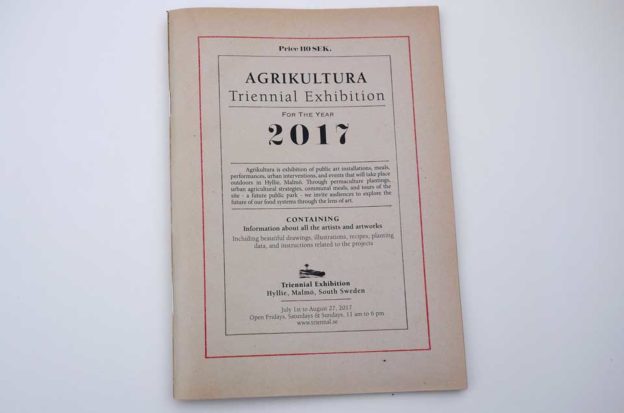
Katalog
[wp_cart_display_product name=”Agrikultura Catalog” price=”13.00″ shipping=”5″ thumbnail=”http://agrikultura.triennal.se/wp-content/uploads/2017/07/book-140×93.jpg” description=”The catalog for the exhibition” shipping=”2.50″]
[wp_cart_display_product name=”Catalog Package” price=”26.00″ shipping=”2.50″ thumbnail=”http://agrikultura.triennal.se/wp-content/uploads/2017/07/book-3-140×93.jpg” description=”We also sell online the complete package which includes the catalog, a seed cover, 9 postcards and bag.” ]
[show_wp_shopping_cart]
Chart of Perennial Edibles at Cluster
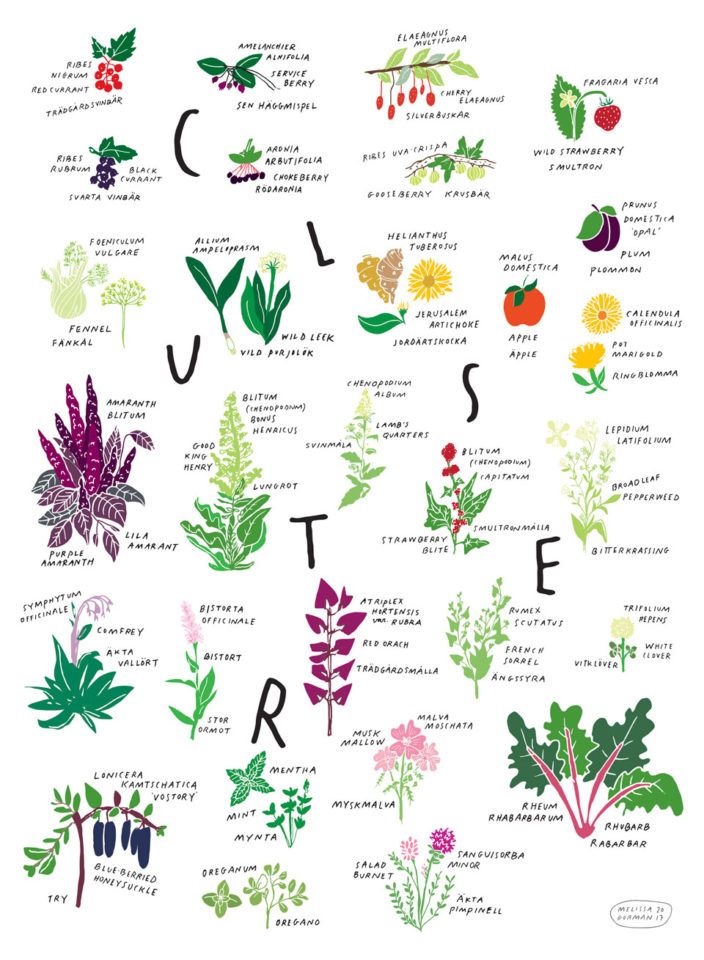
Maps and Charts are in collaboration with Melissa Gorman.
Testing nature’s edible resources at Hyllie
Testing nature’s edible resources at Hyllie for Wasteland Encyclopaedia. Soup is made from 100% local wild plants and mushrooms.
We made vegetable stock from Daucus carotus (vildmorot, Queen Anne’s Lace) – root, leaves and flowers
and Pastinaca sativa (vild palsternacka, wild parsnip) – root, leaves and flowers.
We strained all wild vegetables from stock as they were too woody to eat.
Then we added to the boiling soup chopped young leaves of Tussilago farfara (hästhov, coltsfoot)
and fried mushrooms, Lycoperdon perlatum (vårtig röksvamp, warted puffball).
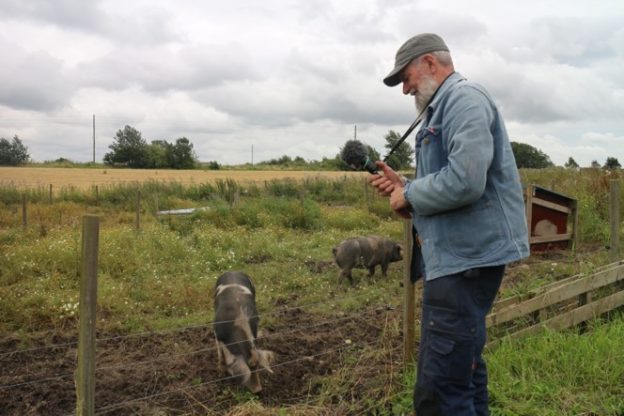
News for Pigs and Man
 I met my new girlfriends Gullig and Grynhilde.
I met my new girlfriends Gullig and Grynhilde.
Hopefully they will join to make a sound art performance at Holstenhof in Vollsjö in the near future.
We need a good day without rain.
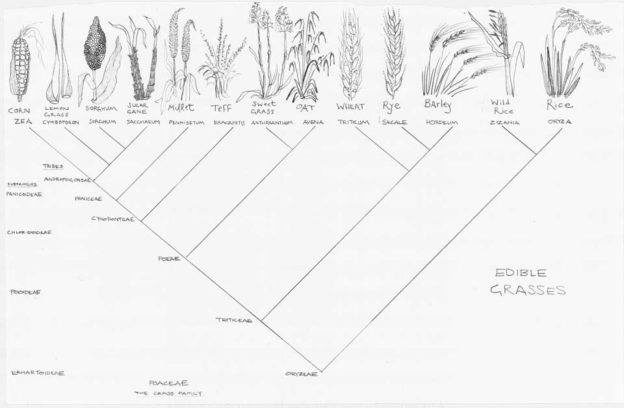
What is that plant? The Tree of Life at Agrikultura
Saturday August 6
12:00 – 14:00
Join artist Sophia Warsh and biologist Christi Byrd for a workshop which will focus on learning the patterns of the flowering plant families present at the Agrikultura site. Warsh and Byrd talk about how to identify the wild and cultivated plants, and then make a tree of life that shows their evolutionary relationships. What families are most abundant on the site? How do we know a rose is a rose? These and other questions will be answered at this exciting workshop.
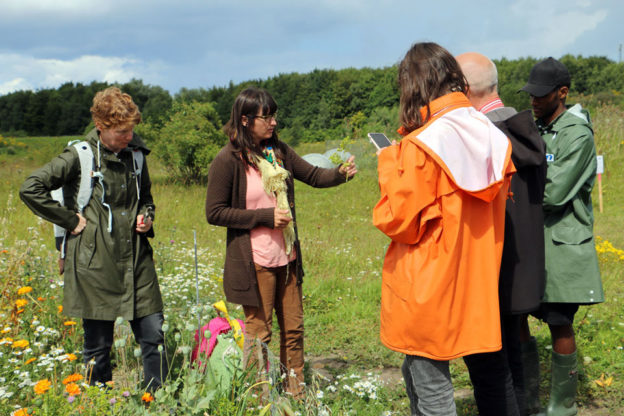
Inventory of plants at Agrikultura
Plant Inventory at Agrikultura
Hyllie, Malmo, Sweden
August 3, 2017
Alismataceae, water plantain family
Alisma plantago-aquatica, European water plantain, svalting
Amaranthaceae
Amaranthus blitum, purple amaranth, lila amarant
Atriplex hortensis var. rubra, red orach, Trädgårdsmålla
Beta vulgaris ssp. vulagris, chard, Mangold
Blitum (Chenopodium) bonus henricus, Good King Henry, Lungrot
Blitum (Chenopodium) capitatum, Strawberry goosefoot, smultronmålla
Chenopodium album, lamb’s quarters, svinmåla
Spinacia oleracea, spinach, spenat
Amaryllidaceae, amaryllis family
Allioideae, onion tribe
Allium ampeloprasm, wild leek, Vild purjolök
Allium sativum, garlic vitlök
Allium cepa, onion, lök
Anacardiaceae, sumac family
Rhus typhina, staghorn sumac, Rönnsumak
Apiaceae, parsley/carrot family
Angelica archangelica, ssp. litoralis, garden angelika, Strandkvanne,
Daucus carotus, Queen Anne’s Lace, vildmorot
Eryngium maritimum, sea holly, Vägtistel
Foeniculum vulgare, fennel, fänkål
Pastinaca sativa, Parsnip – Palsternacka
Asteraceae, Aster or sunflower family
Achillea millefolium, yarrow, röllika
Arctium lappa/minus, burdock, Stor/liten kardborre
Artemesia vulgaris, mugwort, Gråbo
Calendula officinalis, pot marigold, ringblomma, ringblomssläktet
Cichorium intybus, chickory, Cikoria eller vägvårda
Cirsium arvense, field thistle, Åkertistel
Cirsium vulgare, bull thistle, Vägtistel
Helianthus tuberosus, jerusalem artichoke, Jordärtskocka
Hypochaeris radicata, false dandelion, Hairy cat’s ear, rotfibbla
Lactuca sativa cv. , lettuce, sallad
Lactuca serriola, prickly lettuce, Rottfibbla
Senecio vulgaris/ Senecio jacobaea, groundsel/ragwort,
Sonchus sp., sow thistle, Molkar,
Tanacetum vulgare, tansy, Renfana
Taraxacum officinale, dandelion, Maskros
Taraxacum albidum, white dandelion, Vit Maskros
Tripleurospermum maritimum, false mayweed, Baldersbrå
Tussilago farfara, coltsfoot, Hästhov/Hästhovsört
Betulaceae, Birch family
Alnus glutinosa, alder, Klibbal
Betula pendula, birch, Vårtbjörk
Corylus avellana, hazelnut, Hassel
Boraginaceae, borage family
Borago officinalis, star flower, borage, Gurkört
Echium vulgare, Viper’s bugloss, blueweed, Blåeld
Phacelia tanacetifolia, Honungsört, lacy phacelia
Symphytum officale, comfrey, Äkta vallört
Brassicaceae, mustard family
Eruca sativa, arugula
Lepidium latifolium, broad-leaved pepperweed, Bitterkrassing
Raphanus raphanistrum subsp. sativus, radish, rädisa
Sisymbrium altissimum, Tumble Mustard, Hamnsenap
Caprifoliaceae, honeysuckle family
Dipsacus fullonum, wild teasel, Fuller’s teasel, Kardvädd
Lonicera kamtschatica ‘Vostory’, blue-berried honeysuckle, Try
Lonicera tatarica, Fagerty, Tatarian honeysuckle, Rosentry
Valleriana officinalis, Valerian – Läkevänderot/ vänderot
Cornaceae, dogwood family
Cornus sericea, Western dogwood, Videkornell
Cucurbitaceae, squash family
Cucurbita pepo var. cylindrica, zucchini
Cucurbita sp., pumpkin, pumpa
Cupressaceae, cypress family
Metasequoia glyptostroboides, dawn redwood
Elaeagnaceae
Elaeagnus multiflora, cherry elaeagnus, silverbuskar
Euphorbiaceae, spurge, rubber or cassava family
Euphorbia helioscopia, spurge, Revormstörel
Fabaceae, legume family
Phaseolus vulgaris, climbing bean, Trädgårdböna
Trifolium incarnatum, Blodklöver, blood clover
Trifolium campestre, yellow clover, Hop clover, Jordklöver
Trifolium pratense, red clover, Rotklöver
Trifolium repens, white clover, Vitklöver
Vicia faba, fava bean, broad bean, böna
Vica cracca/ sylvatica / villosa, vetch, Vicker
Fagaceae, Beech, Chestnut, or oak family
Fagus sylvatica, beech, Bok
Geraniaceae, Geranium family
Geranium pusillum, small-flowered crane’s bill, Sparvnäva
Ginkgoaceae, ginkgo family
Ginkgo biloba, maidenhair tree, ginkgo
Grossulariaceae, currant family
Ribes nigrum, black currant, svarta vinbär
Ribes rubrum, red currant, Trädgårdsvinbär
Ribes uva-crispa, gooseberry, krusbär
Hydrangeaceae, Hydrangea family
Hydrangea sp., Hydrangea, Hortensia
Hypericaceae, St. John’s wort family
Hypericum perforatum, St John’s-wort, johannesört
Juncaceae, rush family
Juncus sp., rush, Tåg
Lamiaceae, mint family
Mentha sp., mint,
Oreganum vulgare, oregano
Linaceae
Linum usitatissimum, flax, Lin
Lythraceae, Loosestrife family
Lythrum salicaria, purple loosestrife, Fackelblomster
Malvaceae, Mallow family
Alcea rosea, hollyhock, stokros
Malva moschata, musk mallow, Myskmalva
Oleaceae, olive family
Ligustrum vulgare ‘Atrovirens’, Liguster, privet
Onagraceae, Evening Primrose family
Chamaenerion angustifolium (Chamerion angustifolium/Epilobium angustifolium),
fireweed, Mjölke/ rallarros
Epilobium sp., willowherb, Dunörter
Oenothera glazioviana, large flowered evening primrose, jättenattljus
Onocleaceae, sensitive fern family
Matteuccia struthiopteris, ostrich fern, strutbräken
Papaveraceae, poppy family
Papaver rhoes, poppy, kornvallmo
Papaver sp., cultivated poppy, valmo
Plantaginaceae, plantain family
Plantago lanceolata, plantain, Svartkämpar
Plantago major, broadleaf plantain, Groblad/ gårdsgroblad
Polygonaceae, Buckwheat family
Bistorta officinale, bistort, Stor ormrot
Fagopyrum esculentum, buckwheat, bovete
Polygonum aviculare, common knotgrass, Trampört
Rheum rhabarbarum, rhubarb, rabarbar
Rumex crispus, curly dock, Krusskräppa
Rumex obtusifolius, bitter bock, broad leaved dock, Tomtskräppa
Rumex scutatus, french sorrel, ängssyra
Primulaceae, Primrose family
Anagallis arvensis, scarlet pimpernel, Rödmire
Resedaceae, mignonette family
Reseda luteola, Dyer’s weed, Färgreseda
Rhamnaceae, buckthorn family
Hippophae rhamnoides, Sea buckthorn, Havtorn
Rosaceae, rose family
Amelanchier alnifolia, service berry, Sen häggmispel
Aronia arbutifolia, chokeberry, Rödaronia
Cydonia oblonga, quince, kvitten
Fragaria vesca, wild strawberry, smultron
Filipendula ulmaria, Meadowsweet, älgört
Geum urbanum, wood avens, Nejlikrot
Malus domestica “Frederik’, apple, äpple
Potentilla reptans, creeping cinquefoil, Revfingerört
Prunus avium, cherry, körsbär
Prunus domestica ’Opal’, plum, plommon
Prunus padus, bird cherry, Hägg
Rosa rugosa, rugosa rosa, Vesros
Sanguisorba minor, salad burnet, Äkta pimpinell
Rubiaceae, Coffee family
Galium sp., bedstraw, Måror
Salicaceae, willow family
Salix sp., willow, Viden
Sapindaceae, soapberry family
Aceraceae, maple tribe
Acer pseudoplatanus, sycamore maple, Tysklönn
Solanaceae, nightshade family
Solanum dulcamara, bittersweet nightshade, Besksöta
Solanum tuberosum, potato, potatis
Scrophulariaceae, figwort family
Verbascum nigrum, black mullein, Mörkt kungsljus
Typhaceae, Cat-tail family
Typha latifolia, Cattail,great reedmace – Bredkaveldun
Urticaceae, Nettle family
Urtica dioica, stinging nettle, Brännässla
Wild Carrot
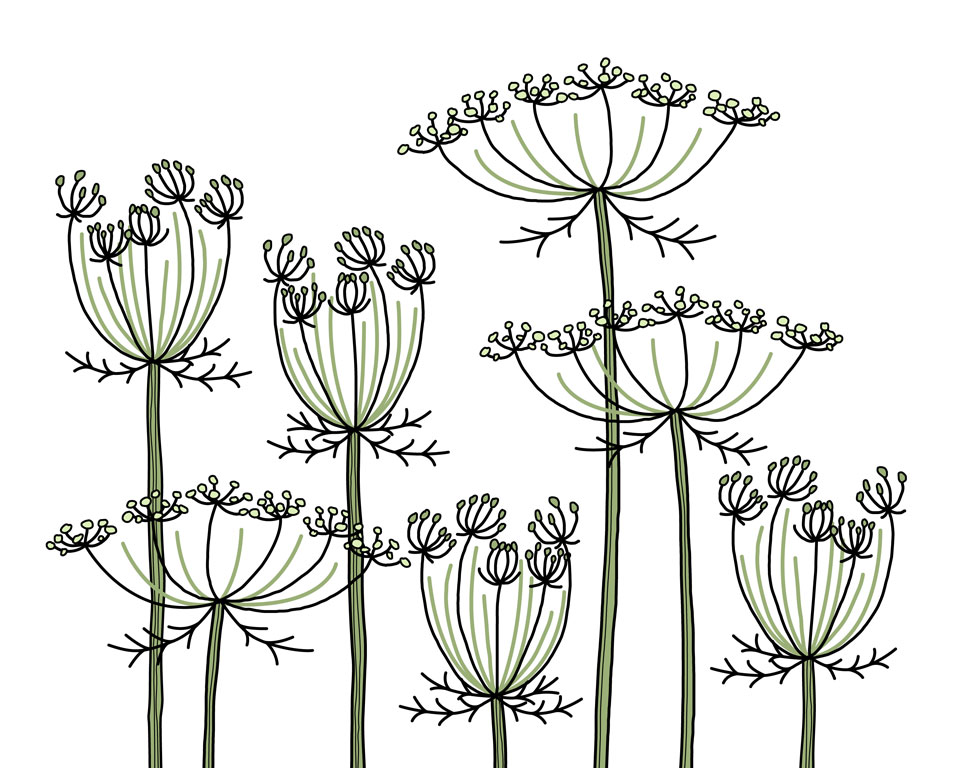
Johanna Kindvall is creating patterns based on the plantings at Agrikultura.
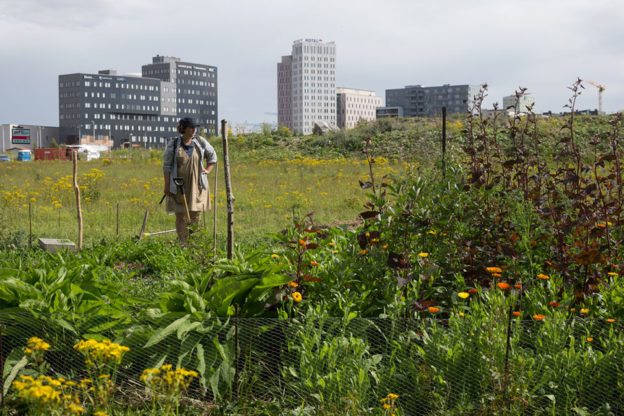
Cluster växer
Cluster växer till sig och efter två månader sedan vi planterade har den etablerat sig väl. I trädgården gör Johnie Ekman och Johanna Eriksson från Holma folkhögskolas kurs i Skogsträdgård/permakultur sin praktik. Trädgården blomstrar under deras händer.
Vill du vara med och fortsätta driva skogsträdgården till att vara Hyllies matpark?
Kontakta: Malin Lobell < info AT malinlobell.se > eller Johnie Ekman < johnieekman AT gmail.com >.
Foto: Johnie Ekman and Malin Lobell
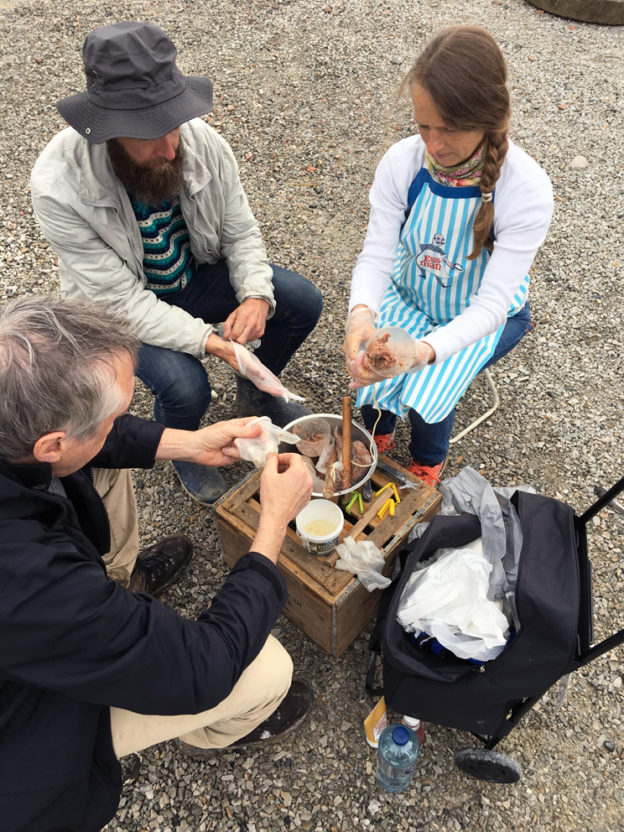
The Mobile Sausage Factory visited Hyllie
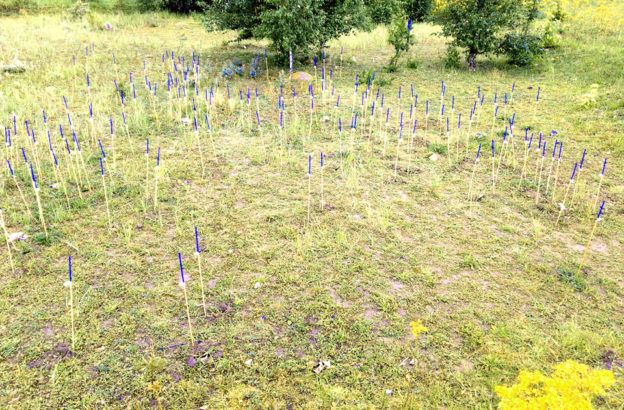
Thoughts on Vague Meadow
Notions about place inform my ongoing work with Vague Meadow. I’m trying to think about place as dystopia. That is, at the brink of anthropocen (www.theguardian.com/world/2017/jun/15/timothy-morton-anthropocene-philosopher ), I ask if we still can think or rethink places (people) in idealistic terms, as utopia? All places are more or less dystopian, more or less bad. That make them political. They can be good for some and bad for someone else at the same time. And they can be improved. Or maybe we lack terms for places in a new geological era? We now know that agriculture produce extended soil erosion globally. Oceans turn sour and many species are deracinated.
Our temporary knowledge tells us that the place in Hyllie (the recessed area) is 5000 years old, in the holocen era. Back to when people started to grow land in Skåne. Erik Sanner has noted that the top soil layer at Hyllie, the most fertile ground in Sweden, was sold many years ago (agrikultura.triennal.se/sv/martian-neighborhood-hyllie/ ). Geology as commodity, anthropocen logic, in which human impact can be traced to every inch of the globe.
More to come…
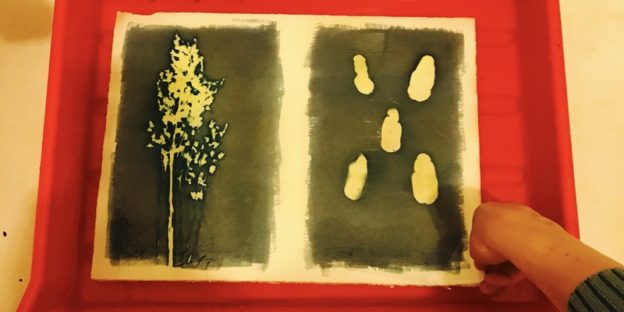
Cyanotype Workshop with Farah Marie Velten
1 July, 2 July, 30 July, and 5 August, 2017
14:00 – 18:00
Join Farah Marie Velten for a demonstration and workshop where you’ll learn the photographic printing process Cyanotype, which she is also using for her Agrikultura project, Agriphoto Culturagraph. The process dates back to 1842 and works using sun and water.
You will get to make your own contact prints using items you’ll find at Agrikultura and get to take your one-of-a-kind pieces home with you.
The world in common
We offered the edible sculptures while the rain was gently enhancing the smell of the land and of the plants. Taste, smell and touch are primary ways to communicate. Performative food offers seem to connect the audience intimately. The seeds were ingested transforming the audience into temporary seeds containers.
Cellular synergy, and spontaneous mutation.
Performance with: Egle Oddo, Johanna Fredriksson, Timo Tuhkanen.
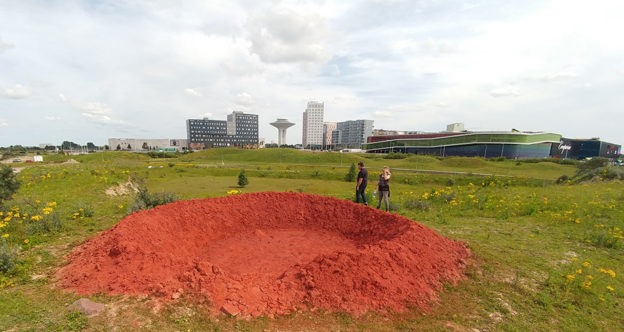
Martian Neighborhood Hyllie
At the center of most European villages is a church or a castle. In Hyllie, the first structure was the spaceship. The hotels, malls, condos and office buildings came later. This is how Martian towns will develop, where the oldest structures will be vessels which have landed.
Topsoil is a valuable commodity, and the topsoil in Hyllie was stripped away and sold many years ago. The earth in the southern part of Sweden is among the most fertile ground in all of Europe, yet Hyllie’s land is not hospitable. To some extent it has been marsformed already, the opposite of terraforming.
In Hyllie as you observe the landscape from the Martian crater, you see very few people. You might see someone on the bicycle path, or other visitors to Agrikultura, but otherwise it looks uninhabited. Yet there is a sizeable population in the neighborhood. Where are they all? Inside the mall, or the office buildings, or the hotels, where the windows don’t open, sealed environments in which the air temperature is controlled by computers, and machines are constantly circulating the air with sophisticated pumping mechanisms.
In Hyllie, people are already living as if they are on Mars.
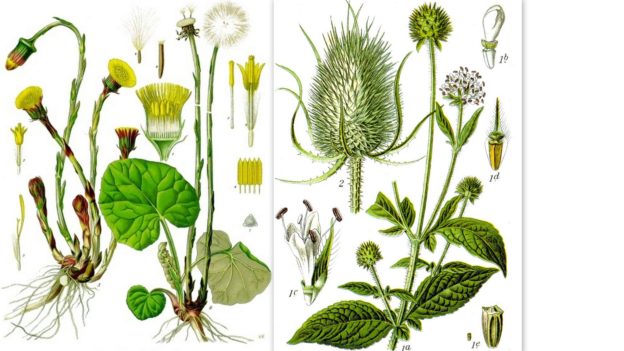
Lördagsserier och evenemang på Agrikultura
Saturday 29 July, 2017
11:00 – 18:00
13:00 – Rundtur i Agrikultura med kurator, Marek Walczak
14:00 – 16:00 Kom och följ konstnär, kock, forager Agata Bielska Annersten och botaniker / trädgårdsmästare Sophia Warsh för en botanisk workshop i Agrikultura. Vi kommer att promenera runt platsen och Sophia kommer att visa deltagarna hur man identifierar och trycker växter. Agata kommer att fokusera på ätbara och medicinska växter som man kan hitta runt omkring i området. Vi kommer att samla några växter, för att att sedan gå till köket vid kiosken för att att gå genom dess användningsområden. Worskshopen är en del av förberedelserna för Agata Bielskas arbete Wasteland Encyclopedia som omfattar forskning om ätbarhet och medicinsk användning av de vilda växter som finns i Hyllie
15:00 – Rundtur i Agrikultura med kurator
16:00 Vid kluster: Malin Lobell Brodersen håller en föreläsning för att hedra daggmasken och jordens betydelse med utgångspunkt från Darwins bok ”The formation of vegetable mould” till Haraways ”human as humusity”. Från monokultur i jordbruket till polykultur i skogsträdgården. Samtalet avslutas med introduktion och provsmakning från Cluster.
16:00 På öppet rum. Delta i Bent Bøgedal Christoffersen grisinspirerade ljudperformance Pigs and Man i det Öppna Rummet!
Förberedelser för Fältvandring I, II och III
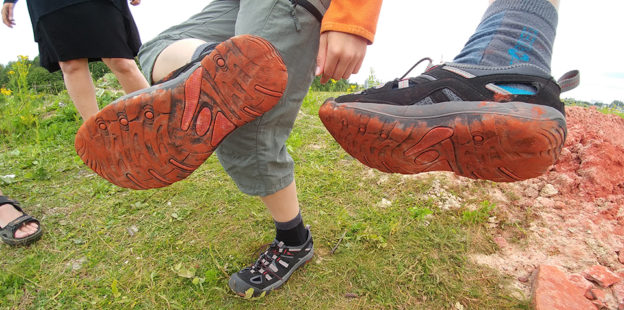
Collaborative Possibilities
A workshop can be anything. Modes of communication and expression do not need to be predetermined. Silence, speech, listening, thought, action… Our phones are pocket television studios, our movements can be choreography, our voices can be music, our words can be stories.
The color of Mars is caused by iron oxide. At the Martian Crater, the authentic iron oxide began to puddle as a result of Earth rain. It looks like wine, red wine, someone said. Let’s take off our shoes and stomp in the mud as if we were crushing grapes.
We performed an ancient ritual in an absurd environment. As people choose which elements of our existing cultures can be taken to Mars and should be taken to Mars, it is possible that some forms will become divorced from their original function or meaning. Wine-making may become puddle-stomping. In the slow pace of the lower Martian gravity, in a sealed environment where all water is recycled, in soil where grapes have never been planted, a traditional functional act becomes a purely aesthetic movement.
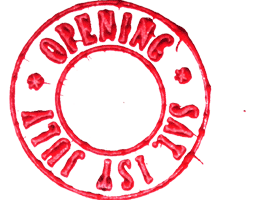


































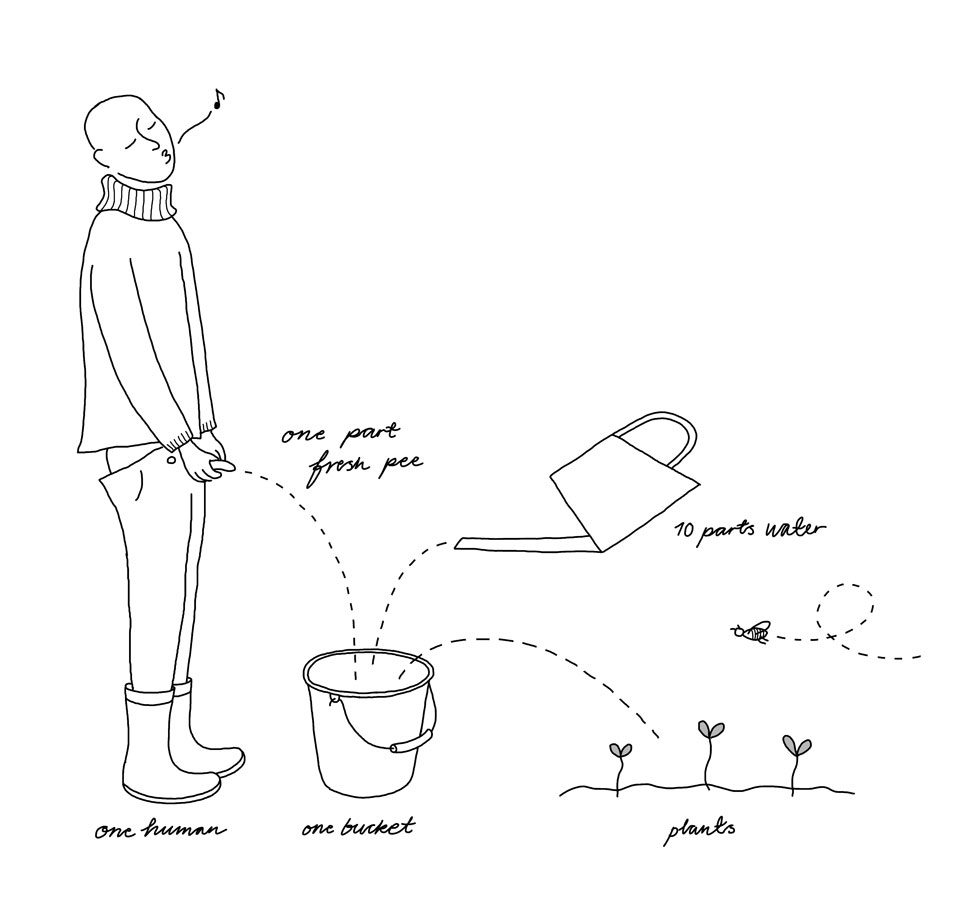































Du måste vara inloggad för att kunna skicka en kommentar.